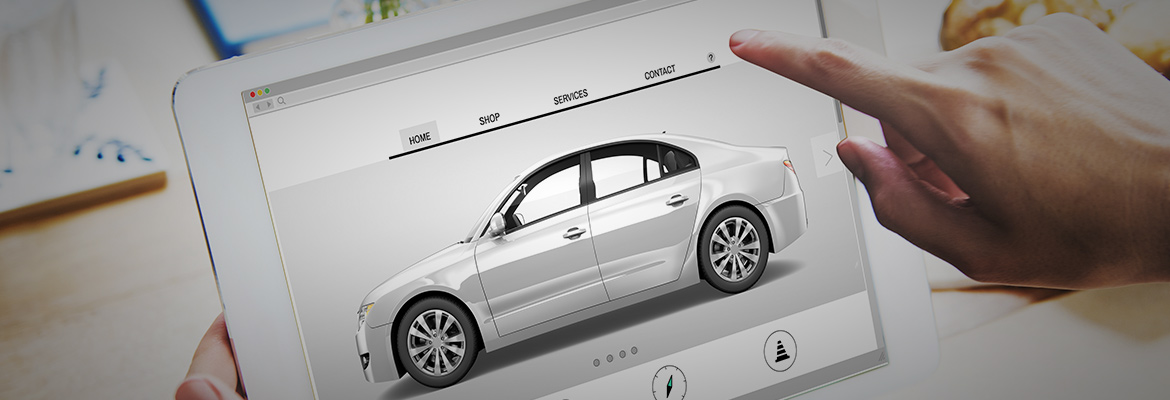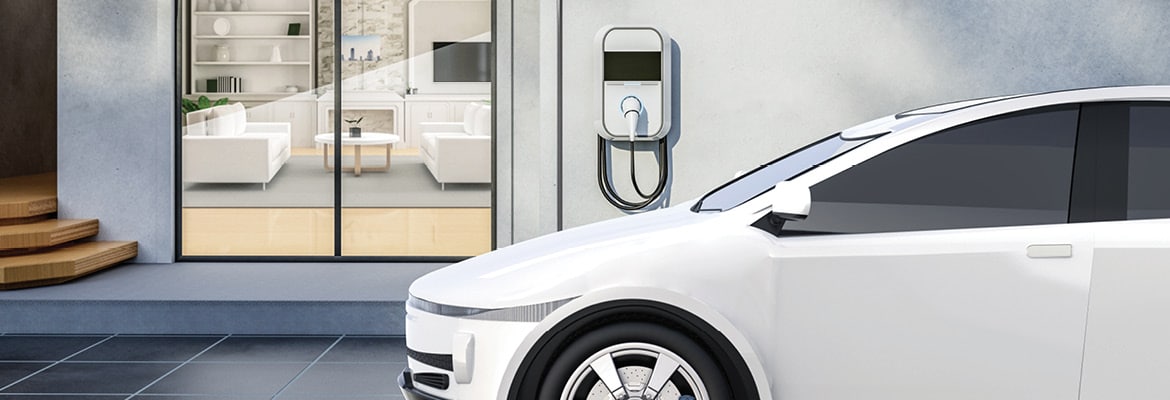Author(s)
Buying a used car has become easier than ever thanks to an abundance of online resources and the explosion of app-based car-buying services. Many of the newer services act as a one-stop shop to buy cars directly and have them delivered, providing a more streamlined buying process. To keep up with the shifting market, many auto dealerships have overhauled their online shopping platforms for a more positive buying experience that includes home delivery.
Buyers aren’t the only ones benefiting from this shift in the used car market. Sellers are also flocking to used car sites to get a good price for their vehicles.
Our picks for the best used car websites:
- AutoTempest
- AutoTrader
- Bring-A-Trailer
- Cars.com
- CarGurus
- CarMax
- CarStory
- Carvana
- Craigslist
- eBay Motors
- Edmunds
- Hemmings
- TrueCar
If you have a car to sell you may be wondering where to list it. There are many websites that cater to different sellers’ needs, so finding the best used car website can be tricky. Here are some of our favorite used car websites for buyers, along with some other sites where sellers can unload cars and trucks quickly.
AutoTempest: best for millions of results in one place
AutoTempest aggregates a massive selection of used cars from millions of listings across multiple sites. Buyers go to AutoTempest to find cars from all the biggest used car sites like Cars.com, Carvana, and TrueCar, plus private sellers from places like eBay and Craigslist. This site caters to the buyer looking for the most options in one place.
We included AutoTempest on this list because it’s able to capture all the results in one search, saving you time and helping you find your ideal used vehicle. Car sellers also benefit from AutoTempest’s wide reach across multiple car-buying platforms.
Read the complete AutoTempest Guide to learn more.
Pros & cons of AutoTempest
Pros:
- User-friendly interface
- Expansive selection for car buyers
Cons:
- Some vehicle details are incomplete
- Transactions aren’t completed on the site
AutoTrader: best for powerful search and filtering tools
AutoTrader is popular with both car buyers and sellers because of its powerful search tools. Sellers like the fact that some listing packages come with a money-back guarantee (no sale, no charge) and listings are syndicated on Kelley Blue Book. There’s also the option to sell to a dealership for a faster sale or get an instant cash offer on the site. If a speedy sale is more important to you than getting top dollar, AutoTrader makes it easy to unload a vehicle fast.
Find more selling tips in our blog: How to Sell Your Used Car on AutoTrader: A Step-By-Step Guide.
AutoTrader has also partnered with Kelley Blue Book to provide an excellent price advisor tool that helps bring clarity and open communication to the buying process. For a detailed buyer’s guide, explore our blog: How to Buy a Used Car on AutoTrader.
Pros & cons of AutoTrader
Pros:
- Powerful search feature
- Money-back guarantee for sellers
Cons:
- No financing options for buyers
Bring-A-Trailer: best for buying and selling rare and specialized vehicles
Bring-A-Trailer caters to used car sellers and buyers looking for more rare and specialized vehicles. Inventory includes everything from souped-up sports cars to rare antiques. It’s an auction site, but buyers pay most of the fees while sellers just pay a single $99 fee for the listing.
If you’re selling a vintage vehicle or something special, there are some good reasons to choose this site. First, it gets a lot of traffic; second, that traffic is mostly made up of passionate auto enthusiasts who are actively looking to buy.
Interested in buying or selling a classic car? Check out our Bring-A-Trailer guide to learn more about how to use this site to its full potential.
Pros & cons of Bring-A-Trailer
Pros:
- Good selection of rare vehicles
- High traffic of passionate buyers
Cons:
- Auction-style bidding makes prices unpredictable
- Listings are only for rare/special vehicles, not everyday-use cars
Cars.com: best for quick listings that reach a large network
This site remains the gold standard for auto sales because it syndicates its listings so widely and has a huge inventory. When you list a car on Cars.com, either through the free listing option or one of the paid options, it may be included on the company’s other properties (Auto.com, PickupTrucks.com, and NewCars.com), and Cars.com affiliate sites. It also offers sellers the option of making quick sales to dealers, so you can move your vehicle fast.
A word of advice: While the site’s huge inventory is an obvious pro for buyers, it can be a challenge for sellers to stand out from the crowd. You’re likely to have the most success with a model that’s in high demand. For less popular vehicles, it’s helpful to use high-quality photos that will catch buyers’ attention. Get all the tips you need to create an eye-catching listing in our guide: How to Sell a Used Car on Cars.com
Shopping instead? Read Buying a Car on Cars.com for detailed pros and cons.
Pros & cons of Cars.com
Pros:
- Large inventory for buyers
- Syndicated network to promote quick sales
Cons:
- Difficult for sellers to stand out in huge inventory
CarGurus: best for free listings with high traffic
This is another site that lets sellers create listings for free. However, sellers should know that if their vehicle sells, CarGurus charges a one-time fee of $99 regardless of the purchase price.
Lots of buyers come to this site—20 million per month. One of the site’s big draws is its unique deal rating feature that makes it easy to shop at a glance. To learn more about buying a car on CarGurus, check out our Guide to Buying Cars on CarGurus blog.
For sellers, every listing is assigned a deal rating that can range from “great” to “overpriced”, so if you’re trying to get top dollar and are unwilling to adjust your price, this might not be the best place to post your listing. However, if you are offering a good deal for your used car you can easily reach a huge number of potential buyers through CarGurus. Our Guide to Selling Cars on CarGurus can help you get started.
Pros & cons of CarGurus
Pros:
- Sellers can create listings for free
- High buyer traffic
Cons:
- With deal rating, sellers may not be able to get top dollar
CarMax: best for large inventory with many in-person locations
CarMax lets you shop a large, nationwide used car inventory, and then buy online or at a location near you. Its detailed search filters make it easy to compare features and find what you’re looking for.
For sellers, CarMax will give you a real offer for your vehicle online. Completing a sale with CarMax, however, will require you to go to one of their stores for an in-person appraisal of your vehicle.
As is the case with almost all used car websites, you’ll probably get less than you would if you independently sold directly to a buyer. The upside is that you will leave CarMax with a check in hand, and they’ll be the ones handling all the necessary paperwork.
Pros & cons of CarMax
Pros:
- Detailed search filters
- Easy process for selling a car
Cons:
- Sellers must complete the process in person
- Trade-in offers are typically low
CarStory: Best for the widest analysis of listings
Owned by Vroom Inc., CarStory now handles Vroom’s auto retail business and sets itself apart with AI-powered analysis of used car listings. By gathering data from over 10 million vehicles across various platforms, CarStory provides users with an in-depth view of the market. This extensive database allows buyers to compare pricing trends, vehicle availability, and historical data, helping them make the best decisions.
For sellers, CarStory offers valuable insights into market trends and pricing, helping them create competitive listings for their vehicles. Its advanced analytics streamline the process of finding the right buyer and getting a good price.
CarStory’s unique strength lies in its ability to deliver broad, data-driven insights that empower both buyers and sellers. Whether you’re looking to buy or sell a car, CarStory’s extensive market analysis can be a key tool in navigating today’s used car landscape.
Pros & cons of CarStory
Pros:
- Extensive market data and analysis
- In-depth insights into pricing and availability
Cons:
- Works better as an analysis tool than a direct marketplace
Carvana: best for convenient buying and selling
This is another car-buying site that combines a convenient shopping experience with home delivery services. Carvana sells used cars right on its website and delivers anywhere in the U.S. Buyers also have the option to pick up vehicles in one of the company’s many car vending machines.
For buying tips and tricks, check out our guide: How to Buy a Used Car on Carvana.
Sellers also like Carvana, which, like many of the sites above, buys cars and trucks. If you sell to Carvana, the process is fast and easy, and they’ll come with a truck to hand off a check and cart your vehicle away.
Our Guide to Selling Your Car on Carvana is a handy reference for sellers.
Pros & cons of Carvana
Pros:
- Buying process includes home delivery
- Home pickup of vehicle for sellers
Cons:
- Prices may be slightly higher than other used car dealers
Craigslist: best free listings for a local market
The main benefit of selling a car on Craigslist is that you can create a hyper-local, photo-rich listing for free and make a sale without having to worry about coordinating with a distant buyer. That said, selling your car or truck may take longer because you’re not putting it in front of a nationwide audience. It’s up to you whether the convenience of selling locally is worth waiting for a buyer to discover your listing.
Pros & cons of Craigslist
Pros:
- Convenience of local market
- Sellers can get top dollar
Cons:
- Car sales may be slower with a smaller market
- Scammers and shady characters abound
eBay Motors: best for easy local buying and selling
If you’re already familiar with how selling on eBay works, then listing your vehicle on eBay Motors will feel familiar. Creating listings is simple and fees are reasonable, making eBay Motors an accessible choice if you want to sell your car locally. And if you happen to find a buyer in another state, Montway makes it easy to coordinate car shipping.
Are there downsides to listing on eBay? The biggest downside may be that bids are non-binding, so a buyer can back out for any reason at any point in the process. However, many sellers find that the ease of listing and inexpensive fees outweigh these drawbacks.
Buying a used car on eBay is fairly straightforward. Just browse the listings on eBay Motors and use the filter options to narrow your selection. When you find a vehicle you’re interested in, submit a bid just like you would on any other eBay auction. Listings are live on the site anywhere from three to five days. At the end of the bidding period, the vehicle goes to the highest bidder. You can also select the “buy it now” option to purchase immediately.
Pros & cons of eBay Motors
Pros:
- Listings are reasonable and easy to create
- Buyers can find unique vehicles
Cons:
- Not all sellers are reputable, need to watch for scams
- Buyers can back out of the sale for any reason
Edmunds: best for trustworthy listings and accurate appraisals
Edmunds is a trusted source in the car-buying industry, offering side-by-side comparisons of different vehicles, buying guides, and connections to dealers around the country. Find fair prices and incentives on your car of choice as well as exclusives and extras, and get the best deal possible when you find your dream car.
If you’re selling a used car, see our guide to selling on Edmunds. For buyers, reference our guide to buying on Edmunds.
Pros & cons of Edmunds
Pros:
- Reputable, long-standing company
- Various tools for new car buyers
Cons:
- The comparison tool only applies to new cars
- Vehicle history reports are not free
Hemmings: best for buying and selling classic and collector cars
Hemmings is where buyers who are looking specifically for classic and collector cars go to buy. So if that’s what you’re selling, this site is worth exploring.
Hemmings is popular with classic car enthusiasts, and they’re not kidding when they say a listing, which will be published online and in print in Hemmings Motor News, can reach millions of buyers. The best part is that these buyers love cars and usually know exactly what they want. For example, if you’re selling a Porsche 911, you’ll attract buyers who love that car as much as you do.
For more on navigating this specialty vehicle platform, read our guide to buying and selling on Hemmings. If you need to ship your recent purchase to your home or other location, consider classic car transport.
Pros & cons of Hemmings
Pros:
- Comprehensive selection of classic cars
- Huge subscriber base
Cons:
- Buying and selling fees
TrueCar: best for transparent pricing and comprehensive details on used cars
TrueCar’s mission is to add transparency to the buying process. It analyzes timely and comprehensive pricing information from dealers and then publishes it in a user-friendly format. Armed with that data, used car shoppers can approach TrueCar Certified Dealers with confidence, knowing they have what they need to get a great price. For more buying tips, check out our Guide to Buying Cars on TrueCar.
Shop from nearly one million pre-owned vehicles nationwide including cars, trucks, SUVs, vans, and convertibles, each with their own condition report so you know exactly what you’re buying. TrueCar excels in giving the buyer a complete picture of the current used car marketplace.
For used car sellers, the platform offers a friendly interface for entering vehicle information and getting a True Cash Offer™ from a local dealer. Reference our Guide to Selling Cars on TrueCar for more information.
Pros & Cons of TrueCar
Pros:
- Impressive selection of pre-owned vehicles
- Friendly user interface for used car sellers
Cons:
- Phone number required resulting in multiple calls
- Model availability may be limited
Dealership websites
Car dealerships have noticed the influx of car-buying sites and apps on the market, and they’ve responded by delivering an upgraded shopping experience on their websites. Many car dealerships offer comprehensive search functions and detailed information about their inventory, including estimates on home delivery.
Even if home delivery isn’t an option, you can still buy a new or pre-owned vehicle from a dealership anywhere in the country and have the car shipped to your location with the help of an auto transport company like Montway.
Similarly, you might consider buying a car directly from the manufacturer. The advantages to this are being able to order the exact car you want since it will be made brand-new to your specifications. You’ll also avoid any markups the dealership might put on the vehicle, potentially saving you money in the process.

FAQs on purchasing a car online
What’s the biggest car website in the USA?
AutoTrader has been in business since 1997 and has since become one of the most widely recognized and trusted automobile websites in the U.S., reaching millions of potential buyers nationwide.
What is the best online portal to sell used cars?
Listings on AutoTrader reach millions of potential buyers and are listed on Kelley Blue Book, making them trustworthy and wide-reaching. However, your specific vehicle and circumstances may be better served on a different website.
Niche platforms like Bring-A-Trailer and Hemmings cater to auto enthusiasts and collectors. eBay Motors and Craigslist are great for local listings. CarStory and Carvana make the process as convenient as possible.
How do I make sure I get a good used car?
With so many used cars for sale, and so many online sellers, it can be hard to tell if you’re making the right decision. There are several steps you can take to protect yourself during the buying process to avoid unpleasant surprises after the sale is finalized.
Millions of car buyers make their purchases online. Unfortunately, many of them make the same easily avoidable mistakes that end up costing them time and money. Know what common mistakes to avoid.
Learn about the benefits of a pre-purchase inspection and get one before you buy. After searching online for your dream car, you may think you found the perfect deal. But don’t just take the vehicle description at face value. Before you buy, the smartest thing to do is have the vehicle inspected by a professional.
What’s the best place to buy used cars under $5,000?
Private markets generally have more options for low-priced vehicles. Local listings on Craigslist and eBay Motors will likely have the best selection of used cars under $5,000.
What is the most popular used car website?
Depending on what type of used car you’re looking for, you may find success on several different used car websites. AutoTrader.com has a very large reach and strong reputation, while Carvana and CarStory deliver the best convenience. Craigslist and eBay Motors are very popular for local market transactions.
Do I pay extra fees to use a used car website?
You will pay extra fees depending on which website you choose. While some sites offer free listings, others will charge you to list your used vehicle. Some only charge a one-time fee while others charge a recurring fee that you must continue to pay to keep your vehicle listed. Be sure to carefully read each website’s terms and conditions to become familiar with their pricing and fees.
How do I know if a used car site is trustworthy?
Carefully read customer reviews to get an idea of a used car site’s reputation and trustworthiness. Look out for the number of reviews a company has as well. The higher the number of reviews, the better. Many companies will have a Better Business Bureau (BBB) rating that can tell you a lot about what it’s like to work with a certain company.

Car transport after an online sale
Long-distance car buying is more popular than ever, which means cars are being shipped across the country every day. Montway Auto Transport makes it easy to get a used vehicle to its new home. With nearly 20 years of experience in the auto shipping industry, we know how to ship cars easily and efficiently. We’ve arranged shipment for over one million vehicles since our start in 2007. Whether you’re buying a used car for yourself or you’re a car reseller who needs to transport vehicles, Montway can help.
Learn more at Montway.com, get an instant quote or call us at 888-666-8929








